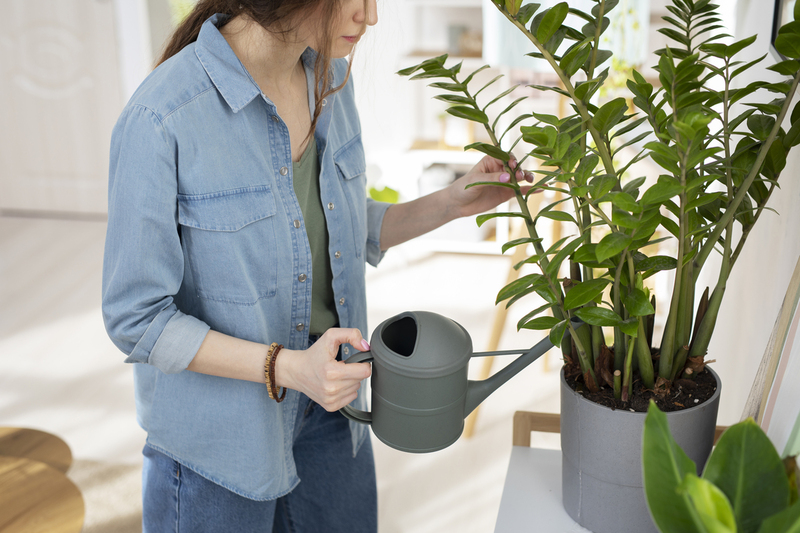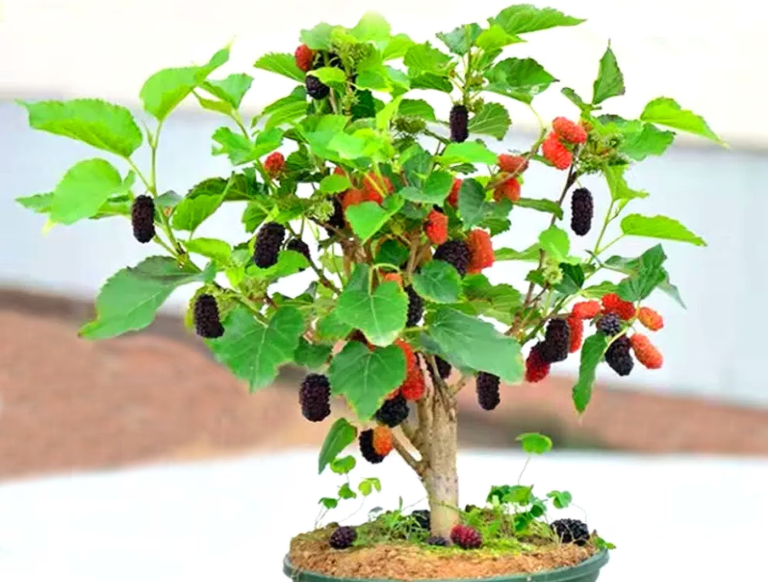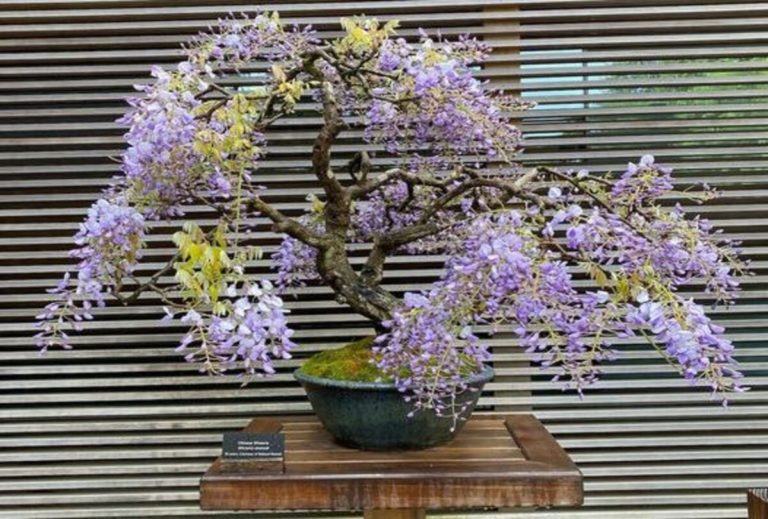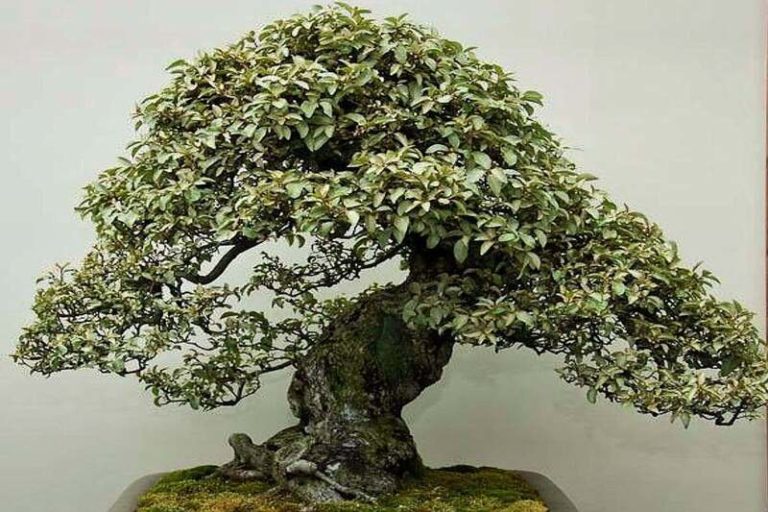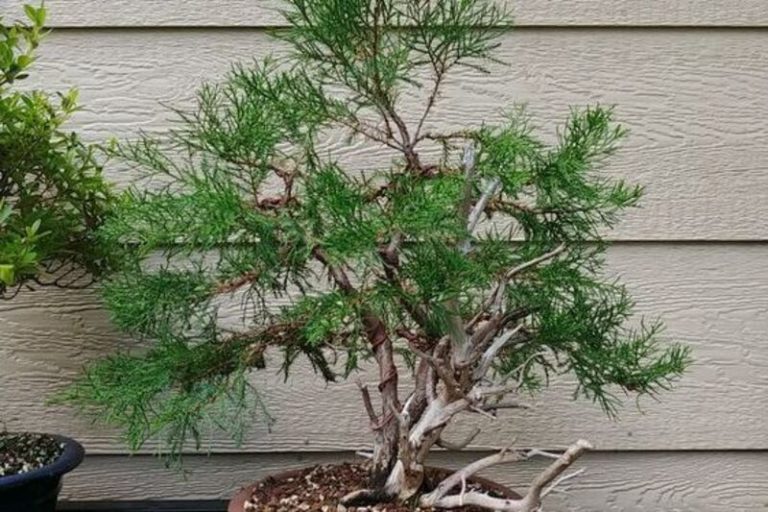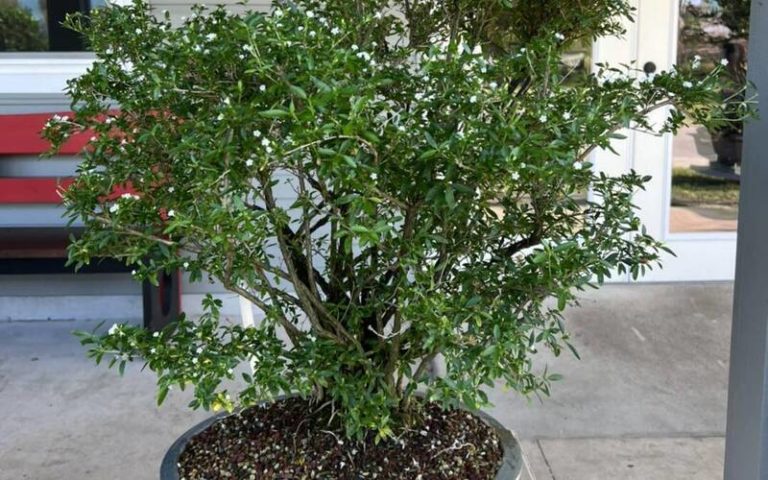Bonsai Watering Can: An Essential Tool for Your Bonsai Tree Care
Bonsai trees are beautiful and unusual additions to any home or yard. But they need a little more care than regular potted plants when it comes to watering and feeding. Bonsai watering cans are one of the most important tools for caring for bonsai trees.
What is Bonsai Watering Can?
A bonsai watering can is a specialized tool designed specifically for watering bonsai trees. It typically has a long and narrow spout that allows you to direct the water to the base of the tree without disturbing the soil or roots. Bonsai watering cans provide better water control and help prevent soil erosion and overwatering. They are essential tools for any bonsai tree enthusiast, as using a regular watering can can be detrimental to the health of the tree. When choosing a bonsai watering can, consider the size, material, and design to ensure it is appropriate for your needs.
Types of Bonsai Watering Cans
There are numerous varieties of bonsai irrigation cans on the market, each with its own distinct design and characteristics. Here are some of the most prevalent varieties:
Traditional watering can: This is a traditional option with a straightforward design and a basic spigot. Traditional watering cans are available in numerous materials, such as plastic, metal, and ceramic.
Long-spouted watering can: This type of watering can has a longer spout that allows you to reach deeper into the soil of your bonsai tree. Long-spouted watering cans are ideal for trees with deeper root systems.
Pump-action watering can: This is a more modern option, with a trigger that allows you to control the water flow. Pump-action watering cans are available in various sizes and are often made of plastic.
Self-watering system: This is a more advanced watering system that automatically waters your bonsai tree over time. Self-watering systems are typically more expensive and require more maintenance.
Consider the size and species of your bonsai tree, as well as your personal preferences and requirements, when selecting an irrigation can. It is essential to select a watering can that is simple to use and control the water flow, as well as durable and simple to maintain.
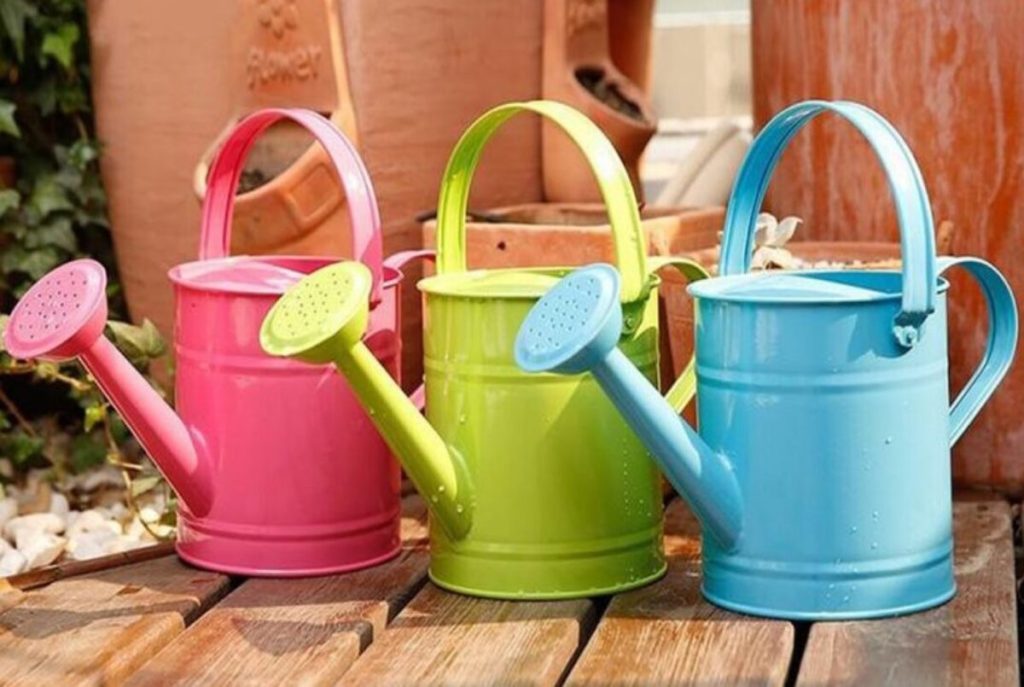
How Does Bonsai Watering Can Work?
A bonsai watering can works by allowing you to gently and precisely water your bonsai tree’s soil without causing erosion or damaging the tree’s delicate roots. The long and narrow spout of the watering can is designed to deliver a gentle stream of water directly to the base of the tree, allowing the water to soak into the soil evenly and deeply.
To use a bonsai watering can, fill it with water and carefully point the spout towards the soil at the base of the bonsai tree. Slowly pour the water over the dirt, making sure not to splash any water onto the leaves or twigs. The long spout lets you water the soil without disturbing the tree’s roots or packing down the soil.
Bonsai watering cans also provide greater control over the amount of water delivered to the tree, which is essential for maintaining proper moisture levels. Overwatering can lead to root rot, while underwatering can cause the tree to dry out and die.
An important item for bonsai tree enthusiasts, a bonsai watering can allows you to water your tree precisely and gently, preserving its health and vitality.
Benefits of Using a Bonsai Watering Can Work
Using a bonsai watering can has several benefits over using a regular watering can or hose:
- Precision: The long, narrow spout of a bonsai watering can allows you to water the soil of your bonsai tree with greater precision, without splashing water onto the leaves or branches. This precision helps prevent soil erosion and overwatering, both of which can harm your tree.
- Control: You can manage the quantity of water provided to your bonsai tree using a bonsai watering can, ensuring that it gets the proper amount of moisture without receiving too much or too little. This is critical for the health and vitality of your tree.
- Ease of use: Bonsai watering cans are designed to be easy to use, with lightweight materials and comfortable handles. This makes it easy to water your bonsai tree without causing fatigue or strain.
- Aesthetic appeal: Bonsai watering cans often feature unique designs and colors that complement the beauty of your bonsai tree. They can be a decorative addition to your gardening tools and add to the overall aesthetic appeal of your bonsai tree display.
- Health of the tree: Using a bonsai watering can helps to prevent soil compaction and root damage, which can result from intensive watering or a forceful water stream. A bonsai’s watering can promote healthy root growth and overall tree health.
When it comes to keeping your bonsai tree at its best, nothing beats utilizing a bonsai watering can regularly.
How to Choose a Bonsai Watering Can
When choosing a bonsai watering can, consider the following factors:
Spout length: Look for a watering can with a long, narrow spout that will allow you to water your bonsai tree with precision and without causing soil erosion. The spout should be long enough to reach the base of your bonsai tree and deliver water evenly.
Capacity: Choose a watering can with an appropriate capacity for your bonsai tree’s size. A small bonsai tree may only need a small watering can, while a larger tree may require a larger capacity.
Material: Bonsai watering cans can be made of plastic, metal, or ceramic. Plastic is lightweight and affordable, while metal is durable and long-lasting. Ceramic watering cans can be decorative and add to the aesthetic appeal of your bonsai tree display.
Handle design: Look for a watering can with a comfortable handle that fits your grip and reduces strain on your wrist. A well-designed handle will make watering your bonsai tree easier and more comfortable.
Brand reputation: Choose a bonsai watering can from a reputable brand known for producing high-quality gardening tools. Reading reviews and checking ratings can help you select a reliable and durable watering can.
Price: Bonsai watering cans can range in price from affordable to expensive. Consider your budget and select a watering can that meets your needs and fits within your price range.
Overall, choosing a bonsai watering can that is the right size, made of durable materials, and comfortable to use will make watering your bonsai tree a breeze.
How to Use a Bonsai Watering Can
Using a bonsai watering can is simple, and the following steps will guide you through the process:
Fill the watering can: Fill your bonsai watering can with water. Use fresh, clean water, and avoid using water that has been treated with softeners or purifiers.
Position the spout: Position the spout of the watering can over the soil of your bonsai tree. The spout should be close to the soil surface but not touching it.
Water the soil: Slowly pour water into the soil, allowing it to be absorbed evenly by the soil. Take care not to splash water on the leaves or branches of the tree.
Observe the soil: Observe the soil to see how much water has been absorbed. Add more water as needed, but do not overwater the tree.
Repeat as necessary: Depending on the size of your bonsai tree and the time of year, you may need to water your tree more or less frequently. Repeat the watering process as necessary, always checking the soil’s moisture level before watering again.
Clean the watering can: After using your bonsai watering can, clean it thoroughly to prevent the buildup of algae or other contaminants. Rinse the watering can with clean water and let it air dry before storing it.
Using a bonsai watering can, you can water your tree without worrying about soil erosion or drowning it.

Common Mistakes to Avoid When Using a Bonsai Watering Can
Here are some common mistakes to avoid when using a bonsai watering can:
- Overwatering: Overwatering is one of the most common mistakes made when caring for bonsai trees. Avoid overwatering by checking the soil’s moisture level before watering. Overwatering can lead to root rot and other plant diseases.
- Watering the foliage: Watering the foliage can lead to fungal diseases and other problems. Always aim the spout of the watering can at the soil, not the leaves or branches.
- Uneven watering: Uneven watering can cause some parts of the bonsai tree to dry out while other parts remain too wet. Water the soil evenly to ensure that the entire root system receives enough water.
- Using hard water: Hard water can contain minerals that can build up in the soil and harm your bonsai tree. Use fresh, clean water that has not been treated with softeners or purifiers.
- Not cleaning the watering can: Failure to clean the watering can after use can lead to the buildup of algae and other contaminants that can harm your bonsai tree. Clean the watering can thoroughly after each use.
- Using the wrong size watering can: If your watering can is too big or too tiny compared to your bonsai tree, you may have trouble watering it evenly. You should pick a watering can proportionate to the size of your tree.
By avoiding these common mistakes, you can help ensure that your bonsai tree thrives and remains healthy.
How to Care for and Maintain Bonsai Watering Cans
Proper care and maintenance of your bonsai watering can will help it last for years and ensure that it provides your tree with the best possible care. Here are some tips on how to care for and maintain your bonsai watering can:
Clean the watering can regularly: After each use, rinse the watering can with clean water and let it dry completely. Regular cleaning will keep algae, germs, and other things that can hurt your bonsai tree from building up.
Store the watering can properly: Store your watering can in a cool, dry place when not in use. Avoid storing it in direct sunlight or near sources of heat, as this can cause the plastic or metal to warp or become brittle.
Check for leaks: Before each use, check the watering can for leaks or cracks. A leaking watering can can make it difficult to water your bonsai tree evenly and can cause soil erosion.
Replace worn or damaged parts: If the spout, handle, or other parts of your bonsai watering can become worn or damaged, replace them as soon as possible. Worn or damaged parts can make it difficult to control the flow of water and can lead to uneven watering.
Use the right water: Use fresh, clean water that has not been treated with softeners or purifiers. Hard water can contain minerals that can build up in the soil and harm your bonsai tree.
By following these tips, you can help ensure that your bonsai watering can provides your tree with the best possible care and lasts for years to come.
Where to Buy Bonsai Watering Cans?
You can buy bonsai watering cans from many places, like online stores, garden shops, and bonsai farms. Here are some places where you can buy a watering can for a bonsai tree:
- Online retailers: Websites such as Amazon, eBay, and Bonsai Outlet offer a variety of bonsai watering cans to choose from. They often have a large selection, competitive pricing, and customer reviews to help you make an informed decision.
- Garden centers: Local garden centers often carry bonsai watering cans in their bonsai or gardening sections. This allows you to see and feel the product before purchasing and may also offer knowledgeable staff to answer any questions you have.
- Bonsai nurseries: Bonsai nurseries specialize in bonsai trees and accessories, including watering cans. They can provide expert advice on choosing the right watering can for your specific needs and may offer a wider range of options.
- Specialty retailers: Specialty retailers that cater specifically to bonsai enthusiasts are another option for purchasing a bonsai watering can. These retailers may have a more limited selection but often carry high-quality and unique products.
No matter where you decide to purchase your bonsai watering can, be sure to read customer reviews, compare pricing and features, and choose a reputable retailer to ensure you get a quality product.
Conclusion
A bonsai watering can is an important tool for anyone who likes to care for bonsai trees. It helps handle water better and stops soil from washing away and from getting too much water. Consider the size, material, and style of a bonsai watering can to make sure it fits your needs. A bonsai watering can can help keep your bonsai tree healthy and growing if it is used and cared for the right way.
FAQ:
Q: What is a bonsai watering can?
A: A specially designed watering can for bonsai trees with a long, thin spout.
Q: Why do I need a bonsai watering can?
A: To provide the right amount of water without disturbing the soil or foliage.
Q: Can I use a regular watering can for my bonsai tree?
A: It is not recommended, as it can disturb the soil and foliage.
Q: How do I know when to water my bonsai tree?
A: Check the soil moisture level regularly by inserting a finger into the soil. Water when it feels dry to the touch.
Q: How much water should I use for my bonsai tree?
A: Water thoroughly until water starts to drain out of the bottom of the pot.
Q: Can I use tap water for my bonsai tree?
A: Yes, but it may contain harmful minerals and chemicals.
Q: How often should I clean my bonsai watering can?
A: After each use to prevent contamination.
Also Read:

